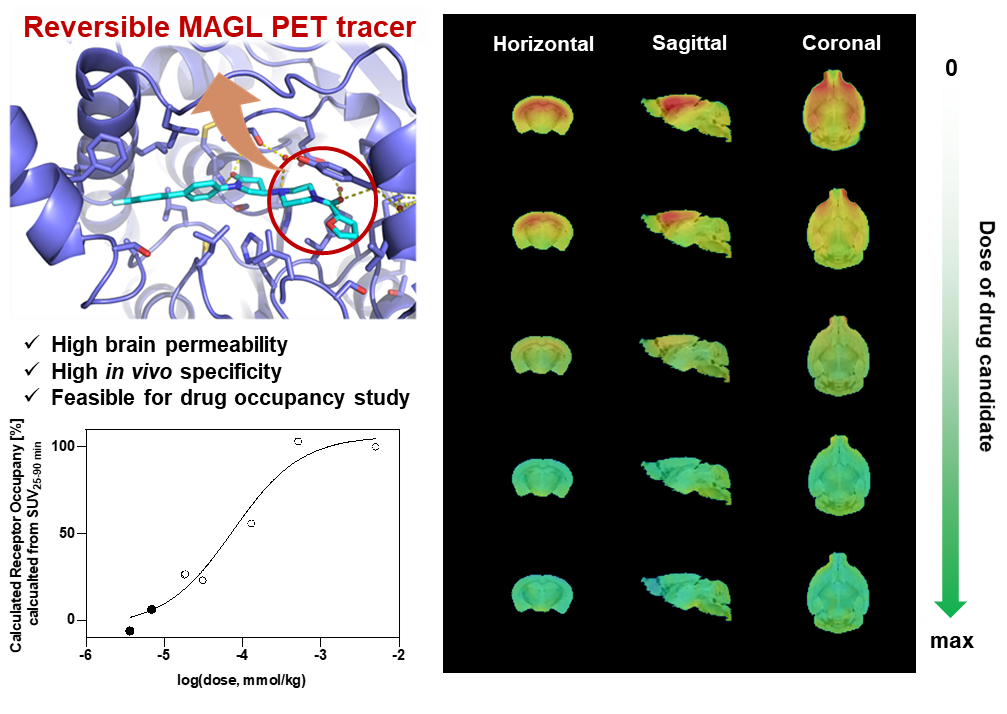Reversible MAGL PET tracer
PET brain imaging with target specific radiotracer provides a new perspective in central nervous system drug discovery and development as it enables non-invasive target visualization and quantification in the neurological and psychiatric conditions to identify the underlying mechanism.
The endocannabinoid system (ECS) and N-methyl-D-aspartate receptors (NMDARs) are two major networks within the brain. The complex and numerous mediators inside ECS and NMDARs regulate a diverse set of physiological processes in neuronal signaling. Dysfunction of NMDARs or alteration of target expression in ECS was reported in several neuropathological conditions.
We recently developed two promising fluorine-18 PET tracers for imaging the cannabinoid receptor subtype 2 ([18F]RoSMA-18-d6) and the monoacylglycerol lipase (MAGL, (R)-[18F]YH149) in the ECS. They offer opportunities to visualize the targets in the brain and evaluate therapeutic drug candidates by target occupancy studies (refer to figure below). Clinical are currently planned. Moreover, two PET tracers previously developed in our lab – [18F]PSS232 for metabotropic glutamate receptor 5 and [11C]Me-NB1 for GluN2B subunits of NMDARs – successfully mapped out the glutamatergic system in human brains. The successful development of these tracers for various targets in ECS and NMDAR facilitates the understanding of the complex signaling networks in the brain and to identify more therapeutic strategies against neurodegenerative diseases.
Literatures
1. He Y, Schild M, Grether U, et al. Development of High Brain-Penetrant and Reversible Monoacylglycerol Lipase PET Tracers for Neuroimaging. J Med Chem. 2022; 65: 2191-2207.
2. He Y, Grether U, Taddio F. M, et al. Multi-parameter optimization: Development of a morpholin-3-one derivative with an improved kinetic profile for imaging monoacylglycerol lipase in the brain. Eur J Med Chem. 2022; 243: 114750.
